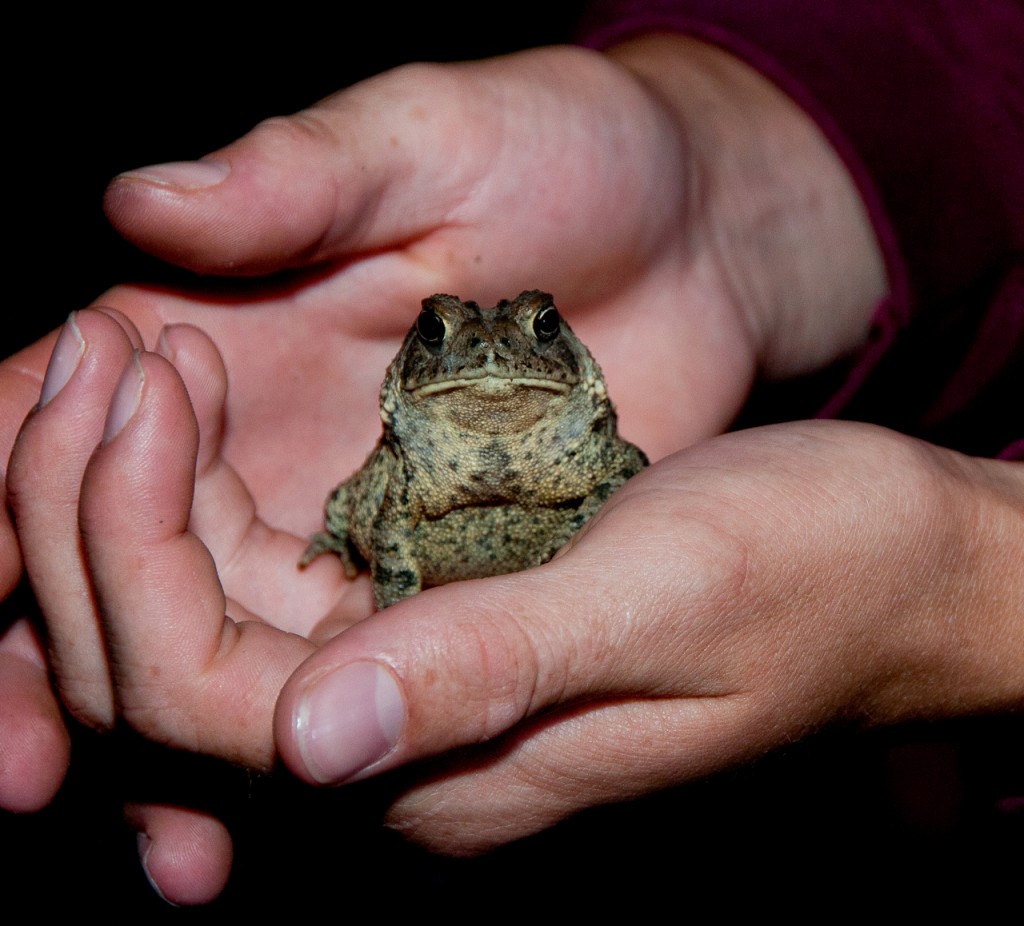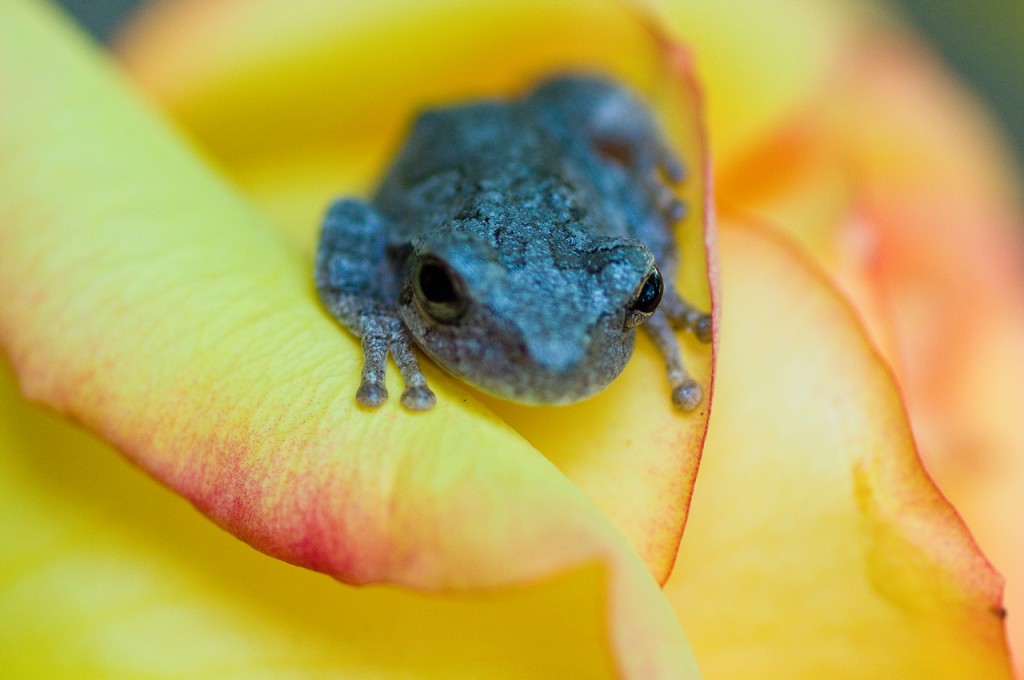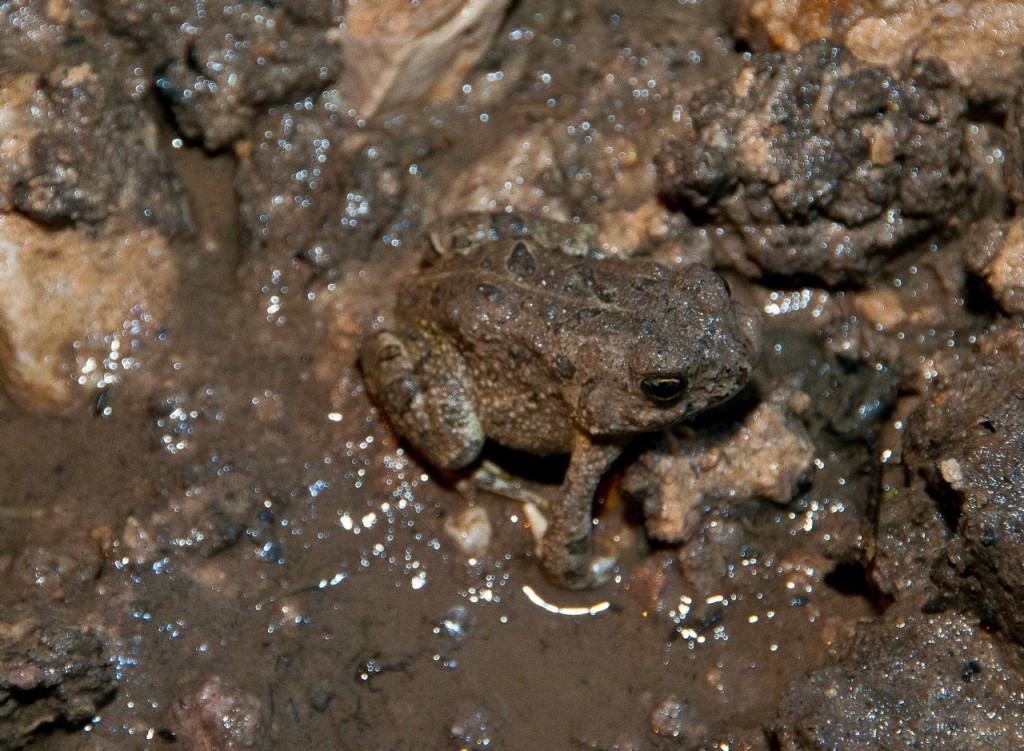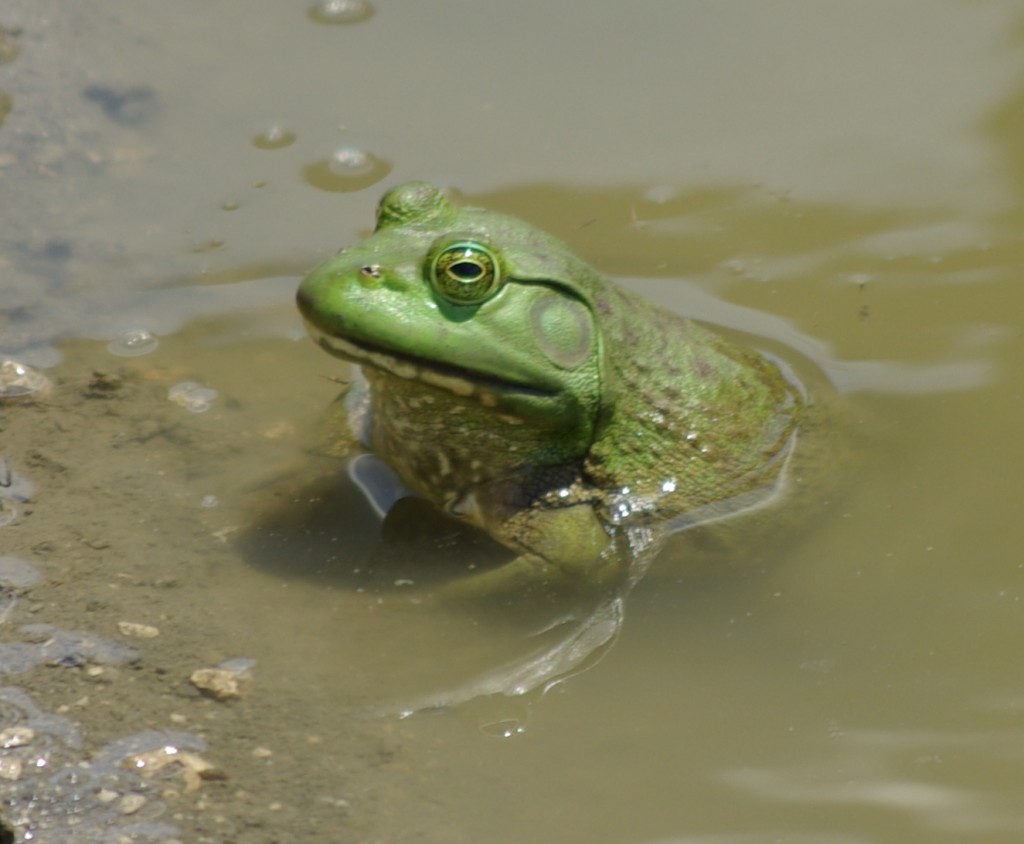A Little Night Music

American toads trill in the string section. Photo courtesy Tom Rollins, ThomasRollinsPhotography.com
It’s fun and heartening to sit or walk on warmer spring nights near wetter places and hear full symphonies of frog and toad song. They sing about love and their music is full of optimism.
There are 16 different species of frogs and toads in Monroe County. Our region is a frog and toad heaven, with innumerable sinkhole ponds and springtime temporary wet ground in the blufflands, and extensive wetlands in the floodplain on the bottoms.
The best wetland habitat for frogs and toads is shallower water, without the presence of fish predators, with plenty of aquatic cover, such as downed logs, fallen branches, leaf litter, and grass and tree-lined edges.
All frogs and toads are amphibians and all belong to the biological order Anura. All share some common characteristics. Frogs and toads have a unique appearance with short, squat bodies, large heads and very large hind legs. They lack scales and have a thin, respiratory skin covered with a layer of moisture secreted by special glands.
It’s easy to tell the difference between a frog and a toad. Frogs are smooth-skinned, have very long hind legs, and “leap-frog” from place to place. Toads, on the other hand, have drier, warty skin, shorter hind legs, and “hop-toad” across the landscape.

Gray tree frogs will cling to window screens and make short trills. Photo courtesy of Tom Rollins, ThomasRollinsPhotography.com
All frogs and toads are cold-blooded, secretive, generally nocturnal, and require a damp or wet environment to live and breed. All female frogs and toads lay jelly-like eggs in water, which then are directly fertilized by the males. Eggs hatch into tadpoles, which are aquatic, vegetarian-eating larval forms that do not resemble the adult forms. Later, the tadpoles transform into juveniles – miniature adults — which grow into full mature size.
Adult frogs and toads will eat anything animal they can get their long, flapper-like, tongues around. Most eat insects, invertebrates and small crustaceans. A bullfrog however, the largest frog in North America, will eat fish, small snakes, and even small rodents and birds. The bulging “pop-eyed” face of a frog or toad is hilarious to watch when they are eating. They swallow their food alive and whole: when they swallow they close their eyelids and their bulbous eyes retract downward into their head as the muscles holding the eyes help push food stuffs down their gullets.
During breeding season, from the first warmer March days through early June, male frogs and toads will be singing trying to attract mates. Each species has a distinct, easily-recognizable mating call. Since every good wetland hosts numerous breeding species, an evening at water’s edge can prove to be a musical improvisational jam session, on par with a nighttime performance of the Bud Light Brigade or the Waterloo German Band.
From the string section: American toads will provide 20-30 seconds-long, high-pitched trills; gray treefrogs (the ones with padded toes that cling to window screens at night) play short, guttural trills; and, greenfrogs call out explosive, banjo-like twangs.

Fowler's toads are in the woodwinds section of our spring symphony. Photo courtesy Tom Rollins, ThomasRollinsPhotography.com
On woodwinds: Fowler’s toads sing short “waaas”; spring peepers offer soft, clear, ascending “peeps” once each second; Pickerel frogs snort low and deep one- second snores; and, Northern leopard frogs voice long, deep, rattling snores.
The brass section includes: high-pitched, buzzy “baaas” from Eastern narrowmouth toads and deep-bass “jug-a-rums” from bullfrogs.
And, keeping time on percussion, cricket frogs provide short, cricket-like clicks; Western chorus frogs mouth a strange tune sounding as if you ran your fingers along a comb’s teeth; plains leopard frogs call a guttural “chuck-chuck-chuck;” and Southern leopard frogs chant “chuckles and groans.”
A spring evening near water in Monroe County is better, and cheaper, than a night at the Muny. Clifftop is hosting a Looney Tunes Frog Frolic on full-moon Friday, April 26th, from 8 to 10 PM. We’ll take a slow, flat and easy hike along a local wetland and identify frogs and toads performing in the orchestra. Bob Weck, herpetologist and head of Southwest Illinois College’s Biology Department, will lead the hike. Hugh Gilbert, former Valmeyerian and noted herpetologist, will assist.
The frog frolic is free and open to the public. Pre-registration is required by April 24th at clifftop@htc.net or 458-4674. You’ll have to pre-register since we haven’t picked the wetlands yet: we’re watching water levels and listening to orchestral rehearsals before finalizing the hike location.
And, if you are interested in improving wetland habitat to sponsor your own symphony orchestral hall please click on the link to read this research report “Amphibians in Sinkhole Ponds & Best Management Practices.”
CLIFFTOP, a local nonprofit organization, is focused on preserving and protecting area bluff lands.
A version of this article appeared in the 19 April 2013 edition of the Monroe County Independent.
© 2013 all content rights reserved Clifftop NFP
Comments are currently closed.

